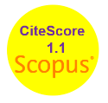Kindly check that your manuscript has been prepared in accordance to the step-by-step instructions provided before submitted to our online submission system. This guide is prepared specifically for people who edit the manuscripts that will be published by Frontier Scientific Publishing since 2023 Vol.6 No.2. You are advised to download the document, Manuscript Submission Template,as a template for more details on preparing your submissions to Journal of Autonomous Intelligence for consideration.
Manuscript Format
Your manuscript should be in MS Word format. All manuscripts must be written in clear, comprehensible English. Both British and American English are accepted. Usage of non-English words should be kept to a minimum and all must be italicized with the exception of "e.g.", "i.e." and "etc." If you have concerns about the level of English in your submission, please ensure that it is proofread before submission by a native English speaker or a scientific editing service. Please chose suitable article type according to Section Policy.
Cover Letter
All submissions should include a cover letter as a separate file. A cover letter should contain a brief explanation of what was previously known, the conceptual advancement with the findings and its significance to a broad readership. The cover letter is confidential and will be read only by the editors. It will not be seen by reviewers.
Title
The title should capture the conceptual significance for a broad audience. The title should not be more than 50 words and should be able to give readers an overall view of the paper's significance. Titles should avoid using uncommon jargons, abbreviations and punctuation.
List of Authors
The names of authors must be spelled out rather than set in initials along with their affiliations. Authors should be listed according to the extent of their contribution, with the major contributor listed first. All corresponding authors should be identified with an asterisk. Affiliations should contain the following core information: department, institution, city, country. For contact purposes, email address of at least one corresponding author must be included. Please note that all authors must see and approve the final version of the manuscript before submitting. Please confirm the authorship according to Authorship Policy.
Abstract
Articles must include an abstract containing a maximum of 300 words. The purpose of the abstract is to provide sufficient information for a reader to determine whether to proceed to the full text of the article. After the abstract, please provide 3-8 key words, avoiding the same words already used in the title.
Text
The text of the manuscript should be in Microsoft Word. Research article should include the Introduction, Materials and Methods, Results, Discussion, Conclusion (optional). The length of the manuscript should be a minimum word count of 4,000 words.
Section Headings
Headings are used to indicate the hierarchy of sections of text. No more than four levels of displayed headings are employed. Please number the section headings (e.g. 1., 2., 3., 4.) in boldface. Likewise, use boldface to identify subheadings too, but please distinguish it from major headings using numbers (e.g. 1.1., 1.2., 2.1., 2.2.) Further subsections of subheadings should be differentiated with the numbers 1.1.1., 1.1.2., 2.1.1., 2.1.2., etc.
Introduction
The introduction should provide a background that gives the broad readership an overall outlook of the field and the research performed. It pinpoints a problem and states its importance regarding the significance of the study. The introduction can conclude with a brief statement of the aim of the work and a comment about whether that aim was achieved.
Materials and Methods
This section provides the general experimental design and methodologies used. The aim is to provide enough details for other investigators to fully replicate your results. It is also required to facilitate better understanding of the results obtained. Protocols and procedures for new methods must be included in detail to reproduce the experiments.
Results
This section can be divided into subheadings. This section focuses on the results of the experiments performed.
Discussion
This section should provide the significance of the results and identify the impact of the research in a broader context. It should not be redundant or similar to the content of the results section.
Conclusion (Optional)
Please use the conclusion section for interpretation only, and not to summarize information already presented in the text or abstract.
The sequence of back matter elements in an article is listed below. There is no numeral label for back matter headings. Some is optional.
Supplementary materials (Optional)
The “Supplementary materials” section should be a short description of the supplementary materials. The detailed information can be formatted in one or more individual supplementary files. These materials are relevant to the manuscript but remain non-essential to readers' understanding of the manuscript's main content. All supplementary information should be submitted as a separate file in Step 4 during submission. Please ensure the names of such files contain 'suppl. info'. Videos may be included in this section.
Author contributions
For research articles, if there is only one author for a paper, you do not need to add author contributions. If there is more than one author, authors are asked to prepare a short, one paragraph statement giving the individual contribution of each co‐author to the reported research and the writing of the paper. For research articles with several authors, a short paragraph specifying their individual contributions must be provided.
The following statements are recommended to be used “Conceptualization, XX and YY; methodology, XX; software, XX; validation, XX, YY and ZZ; formal analysis, XX; investigation, XX; resources, XX; data curation, XX; writing—original draft preparation, XX; writing—review and editing, XX; visualization, XX; supervision, XX; project administration, XX; funding acquisition, YY. All authors have read and agreed to the published version of the manuscript.”
Funding
Financial support in preparation of the publication is included at the end of the article, which is NOT mandatory. If authors provided, they should be in the same style as the template,
e.g.,
Please add: “This research received no external funding” or “This research was funded by [name of funder] grant number [xxx]” and “The APC was funded by [XXX]”. Check carefully that the details given are accurate and use the standard spelling of funding agency names at https://search.crossref.org/funding, any errors may affect your future funding.
Acknowledgments (Optional)
Acknowledgments of the publication are included at the end of the article, and are NOT mandatory. Keep them as the authors have provided.
Conflict of interest
All authors are required to declare all activities that have the potential to be deemed as a source of competing interest in relations to their submitted manuscript. Examples of such activities could include personal or work-related relationships, events, etc. Authors who have nothing to declare are encouraged to add "No conflict of interest was reported by all authors" in this section. Please comply with the Conflict of Interest policy.
Figures
Authors should include all figures into the manuscript and submit it as one file in the OJS system. Figures include photographs, scanned images, graphs, charts and schematic diagrams. Figures submitted should avoid unnecessary decorative effects (e.g. 3D graphs) as well as be minimally processed (e.g. changes in brightness and contrast applied uniformly for the entire figure). Please remember to label all figures (e.g. axis.) and number them (e.g. Figure 1, Figure 2.) in boldface. The caption should describe the entire figure without citing specific panels, followed by a legend defined as description of each panel.
The preferred file formats for any separately submitted figure(s) are PNG or JPEG. All figures should be legible in print form and of optimal resolution. Although there are no file size limitation imposed, authors are highly encouraged to compress their figures to an ideal size without unduly affecting legibility and resolution of figures. This will also speed up the process of uploading in the submission system if necessary.
In the main text, all figures should be cited in the following formats:
Figure 1 Figures 3 and 4 Figures 1, 3 and 4 Figures 1–3 | Figure 1a,b Figure 1a–c Figure 9a or Figure 9c Figure 9a or Figure 10c Figure 2(a1) Figure 2(a1,b2) |
Figure 1 Left or Figure 1 Right (not recommended) |
If “respectively” is after the citations of figures or tables, like “Figures 2a, 3a, 4a and 2b, 3b, 4b, respectively”, just keep them as in their provided form. |
The figure or table is usually put after its first appearance, but it can be adjusted depending on the blank space.
The Editor-in-Chief and Publisher reserve the right to request from author(s) the high-resolution files and unprocessed data and metadata files should the need arise at any point after manuscript submission for reasons such as production, evaluation or other purposes. The file name should allow for ease in identifying the associated manuscript submitted.
Tables, Lists and Equations
Tables should be prepared in MS Word/Excel table format, not inserted as images. Very large tables can be placed in the Supplementary Material. The tables should include a title at the top. Titles and footnotes/legends should be concise. These must be submitted together with the manuscript. Likewise, lists and equations should be properly aligned and its meaning clear to readers.
In the main text, tables should be cited in the following formats:
Table 1 | Tables 3 and 4 |
Tables 1, 3, and 4 | Tables 1–3 |
If there are subtables (a) or (b), please combine them into one table, and use the format of Table 1a,b in the main text.
In-text Citations
List and number all bibliographical references that make an important contribution to the paper. When referenced in the text, enclose the citation number in square brackets, for example:
- Negotiation research spans many disciplines[3,4].
- This effect has been widely studied[1-5,7].
References
This section is compulsory and should be placed at the end of all manuscripts. Do not use footnotes or endnotes as a substitute for a reference list. The list of references should only include works that are cited in the text and that have been published or accepted for publication. Personal communications and unpublished works should be excluded from this section.
Journal
Journal article in English
Author 1 FM, Author 2 FM, Author 3 FM, et al. Title of the article.
Journal Name Year; Volume(Issue) (if available): Firstpage–Lastpage. doi (if available)
- e.g., Petitti DB, Crooks VC, Buckwalter JG, et al. Blood pressure levels before dementia. Archives of Neurology 2005; 62(1): 112–116. doi: 10.1001/archneur.62.1.112
Journal article in a language other than English
Author 1 FM, Author 2 FM, Author 3 FM, et al. English title of the article (language). Journal Name Year; Volume(Issue) (if available): Firstpage–Lastpage. doi (if available)
- e.g., Massone L, Borghi S, Pestarino A. Purpuric palmarsites of dermatitis herpetiformis (French). Annual Dermatol Venerol 1987; 114(12): 1545–1547.
Book
Book without editors
Author 1 FM, Author 2 FM. Chapter (optional). In: Title of the Book, Edition (if available). Publisher; Year. pp. Page range (optional).
- e.g., Cerdá C. Oxidative Stress and Inflammation in Non‐communicable Diseases—Molecular Mechanisms and Perspectives in Therapeutics. Springer International Publishing; 2014.
- e.g., Desiraju GR, Steiner T. The Weak Hydrogen Bond in Structural Chemistry and Biology, 2nd ed. Oxford University Press; 1999. pp. 10–25.
Book with editors
Author 1 FM, Author 2 FM. Title of the contribution. In: Editor 1 FM, Editor 2 FM (editors). Title of the Book, Edition (if available). Publisher; Year. Volume (optional), pp. Page range (optional).
- e.g., Almlof J, Gropen O. Relativistic effects in chemistry. In: Lipkowitz KB, Boyd DB (editors). Reviews in Computational Chemistry. VCH; 1996. Volume 8. pp. 206–210.
In a translated book, put the translators’ names after the editors’ names: “Translator 1 FM (translator)” or “Translator 1 FM, Translator 2 FM (translators)”. For example:
- e.g., Tessier J. Structure, synthesis and physical—Chemical properties of deltamethrin. In: Tessier J (editor). Walden BVdG (translator). Deltamethrin Monograph. Roussel‐Uclaf; 1982.
If the editors and translators are the same, the format should be as in the following example:
- e.g., Gadamer HG. Hermeneutics and logocentrism. In: Michelfelder DP, Palmer RE (editors and translators). Dialogue and Deconstruction: The Gadamer‐Derrida Debate. State University of New York Press; 1989. pp. 114–125.
Conference
Full citations of published abstracts (proceedings)
In most cases, the proceedings will be simply called “Proceedings of the Name of the Conference (full name)” without a book title. In this case, please only add the conference name in the proceedings’ title and keep that in regular face (i.e., do no italicize):
Author 1 FM, Author 2 FM, Author 3 FM, et al. Title of presentation. In: Proceedings of the Name of the Conference; Date of Conference (Day Month Year) (if available); Location of Conference (City, Country) (if available). Abstract Number (optional), Pagination (optional).
- e.g., Chum O, Philbin J, Zisserman A. Near duplicate image detection: Min‐Hash and tf‐idf weighting. In: Proceedings of the 19th British Machine Vision Conference (BMVC 2008); 1–4 September 2008; Leeds, UK. pp. 812–815.
If the proceedings are published as a book with a separate title (i.e., not “Proceedings of the Name of the Conference (full name)” as the title), the Book Titles is in italic:
Author 1 FM, Author 2 FM, Author 3 FM. Title of presentation. In: Editor 1 FM, Editor 2 FM (editors) (if available). Title of Collected Work, Proceedings of the Name of the Conference; Date of Conference (Day Month Year) (if available); Location of Conference (City, Country) (if available). Publisher; Year. Abstract Number (optional), Pagination (optional).
- e.g., Beebe N. Digital forensic research: The good, the bad and the unaddressed. In: Advances in Digital Forensics V, Proceedings of the Fifth IFIP WG 11.9 International Conference on Digital Forensics; 26–28 January 2009; Orlando, FL, USA. Springer; 2009. Volume V, pp. 17–36.
Oral presentations without published material
Author 1 FM, Author 2 FM, Author 3 FM. Title of presentation (if any). Presented at the Name of Conference; Date of Conference (Day Month Year) (if available); Location of Conference (City, Country) (if available); Paper number (if available).
- e.g., Zhang Z, Chen H, Zhong J, et al. ZnO nanotip‐based QCM biosensors. Presented at the IEEE International Frequency Control Symposium and Exposition; 4–7 June 2006; Miami, FL, USA.
Thesis/Dissertation
Author FM. Title of Thesis [Level of thesis]. Degree‐Granting University; Year.
- e.g., Mäckel H. Capturing the Spectra of Silicon Solar Cells [PhD thesis]. The Australian National University; 2004.
The level of thesis can be called “XX thesis” or “XX dissertation”. Thesis types include but are not limited to the following:
PhD thesis
Master’s thesis
Bachelor’s thesis
Licentiate thesis
Diploma thesis
Newspapers
Author 1, Author 2, Author 3, et al. Title of article. Title of Periodical, Complete Date, Pagination (if available).
- e.g.: Squires S. Falling short on nutrients. The Washington Post, 4 October 2005, p. H1.
Patent
Patent Owner 1, Patent Owner 2, Patent Owner 3. Title of Patent. Patent Number, Date (Day Month Year, the Application granted date).
- e.g., Sheem SK. Low‐Cost Fiber Optic Pressure Sensor. U.S. Patent 6,738,537, 18 May 2004.
- e.g., Thomas WM, Nicholas ED, Needham JC, et al. Friction Stir Butt Welding. International Patent Application No. PCT/GB92/02203; GB Patent Application No. 9125978.8; U.S. Patent Application No. 5,460,317, 6 December 1991.
Unpublished work
Author 1 FM, Author 2 FM. Title of unpublished work. Journal Title Year (if available); Phrase Indicating Stage of Publication (submitted, in press, etc.).
- e.g., Guo L, Zhu Y, Gunawan O, et al. Electrodeposited Cu2ZnSnSe4 thin film solar cell with 7% power conversion efficiency. Progress in Photovoltaics: Research and Applications 2014; in press.
- e.g., Nokinara K. Title of unpublished work. Duke University, Durham, UK; 2003; Unpublished work.
Online resources
Author (if available). Title of content (if available). Available online: http://URL (accessed on Day Month Year). In case of a homepage, the access date is not required.
- e.g., Weier MH. In a big win for HP, Wal‐Mart chooses Neoview Data Warehouse. Available online: http://www.informationweek.com/news/201202317 (accessed on 2 June 2012).
References tips:
1. References are limited to first three authors.
2. References with more than three authors: the first three authors should be listed; all the subsequent authors should be replaced by single “et al.” As et al. means “and others”, list all names if there are only 4 authors.
3. Journal name in each reference should not be abbreviated.
4. “(a) ref. 1; (b) ref. 2” in one reference is not allowed, and it should be divided into two references.
5. Pagination: use the abbreviations “p.” and “pp.” to indicate single and multiple pages, respectively, e.g.,
p. 1
pp. 1–20
pp. 1, 15, 20
240p (to cite the whole book)
6. The article number can replace the page number.
7. If the author names appear in non-roman alphabets, Do Retain it as in original form.
e.g. Å not as A | ĝ not as g |
Ø not as O | ñ not as n |
Ç not as C | ü not as u |
Ł not as L | æ not as ae |
à not as a | oe not as oe |
8. Capitalize first letter after colon/em dash.
9. If you are not sure what type it is, just try to put it as an online resource—find the document or website’s title, and its URL address. The accessed date should be provided later by the authors (ask the authors to provide this).
Appendix (Optional)
Appendixes provide information supplementary to an article and are included at the end of the main document. If there is only one, it is designated “Appendix A”; if there is more than one, they are designated “Appendix A”, “Appendix B”, etc.
Appendixes should be cited in the main text. An appendix’s Figures/Tables/Equations can be cited in the main text, but are not mandatory. The content of an appendix is contained within the sections subordinate to the major heading, “Appendix.” The language and styling rules for the text also apply to appendixes. The form of numbering of tables, figures, and equations in an appendix should be started with prefix A, (i.e., Figure A1, Figure A2, Table A1, etc.).








